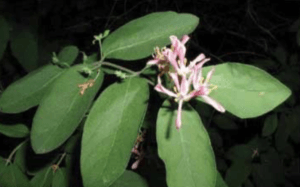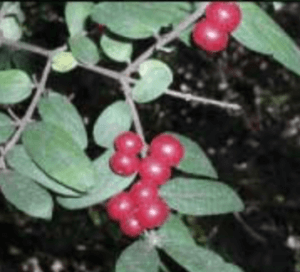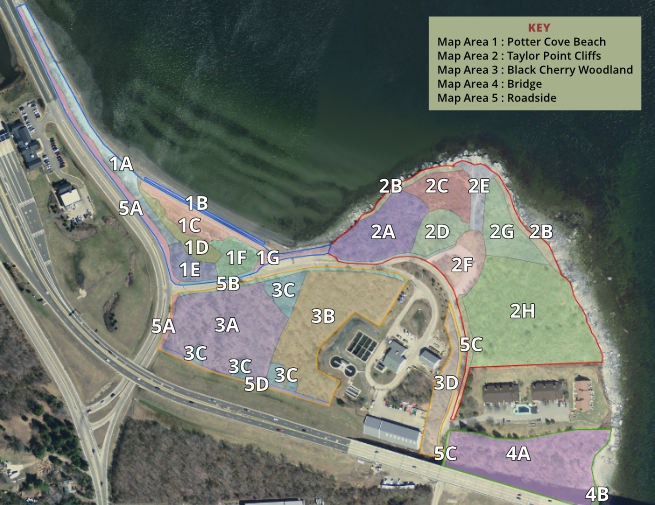Common Name: Pretty Honeysuckle or Bell’s Honeysuckle
Specific Name: Lonicera x bella
Known Occurrence at Taylor Point:
Map areas: Beach 1F, Cliffs 2C, Cliffs 2D, Cliffs 2F, Cliffs 2H, Woodlands 3A, Woodlands 3B, Woodlands 3C, Woodlands 3D
Category: Invasive, Non-Native, Shrub

Ecological Considerations:
Lonicera x bella is hybrid cross between Tatarian and Morrow’s honeysuckles. It is a deciduous upright shrub that spreads aggressively, forms dense thickets, and grows as high as 10 feet tall or higher. It has a shallow root system.
The flowers are usually pink, often fading to yellow. They are tubular, and fragrant, blooming from May through June. The fruits are red and paired. They are dispersed by birds. This honeysuckle leafs out earlier than other varieties and it ha a long growing season.
Lonicera x bella grows well in abandoned fields, floodplains, open disturbed areas, pastureland, forests, and along roadsides as well as utility rights of way and vacant lots. It adapts to a wide variety of habitats and can tolerate various moisture and light regimes.
Problems Posed by the Plant:
Pretty honeysuckle forms dense stands and can suppress the growth of native species by altering habitats, decreasing light availability to understory plants, depleting soil moisture and nutrients, and possibly releasing allelopathic chemicals that inhibit growth of other plants.
Native Species Affected by this Plant:
Factors Affording a Competitive Advantage to this Plant:
Pretty honeysuckle forms dense thickets and grows quickly, leafing out earlier in the season than other species, and lasting through an extended growing season.
Propagation Mechanisms and Related Issues Affecting Efforts to Remove and/or Eliminate this Plant from Taylor Point:
Pretty honeysuckle reproduces from seeds dispersed by birds.
Documented Best Removal Practices and Options/Pros and Cons of Various Options:
Small to medium sized Pretty honeysuckle plants can be dug up or pulled by hand. Prescribed burns in spring can effectively kill seedlings. Brush cutting of plants should be undertaken during the growing season. Generally two cuts per year are recommended, one in early spring followed by one in the late summer or early autumn. Cuts made in the winter while the plant is dormant will only encourage vigorous re-sprouting. Foliar spray may be effective for large populations where few natives are present. Treating cut stumps with herbicide may be effective. Basal bark treatment may also prove effective; spray bottom 18 inches of all stems.
Case Studies of Removal Efforts, Lessons Learned and Recommendations:
Additional Photos



Sources cited:
Midwest Invasive Species Information Network
Invasive Plant Species Atlas of New England
Wisconsin Invasives
Virginia Department of Conservation and Recreation
Key Words:
Shrub;
Pretty Honeysuckle
Bell’s honeysuckle
Lonicera x bella
Seed – Berries / Drupes;
Potter Cove Beach
Taylor Point Cliffs
Black Cherry Woodland
1-F, 2C, 2D, 2F, 2H, 3A, 3B, 3C, 3D
